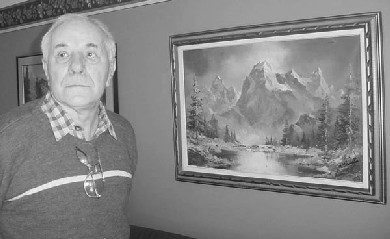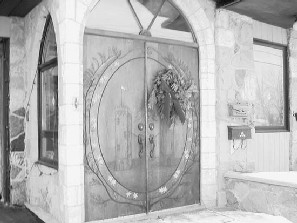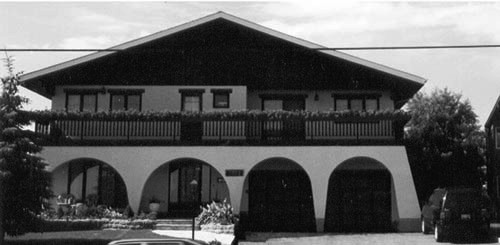|
|
| |
| Daniel
Zanella: A Modern Renaissance Man |
| By
Oliviana Mingarelli |
| Daniel
Zanella entered the construction workforce at a very young age. His
father taught him all he could and the rest he learned through correspondence.
At 21,
Daniel Zanella was one of the youngest builders in Italy. Having obtained
certification by the Italian government in this field, Zanella’s
talents were in demand. In fact, he was so well respected in his field
that he helped to construct the 1955 Winter Olympic Games in Cortina.
During this time a group of professional artists chose to include
some of Zanella’s artwork in an exhibition they were having. |
 |
| Daniel
Zanella at home with one of his many paintings. |
|
|
Zanella
always loved the arts but up until
this point had maintained a clear distinction between his passion
(art) and his work. Now he gladly accepted the honour and submitted
one of his pieces for viewing in the great city of Venice. Since northern
Italy has a large market for quality artwork, his artwork found a
very important niche and was well embraced.
|
Excerpt from
“Mute Guitar”
You have to send me soon though,
Oh predilected son of mine
Through magic waves or comets,
A list of Heavenly prayers
I want to know how
The way you pray up there
And strive and earn
Perhaps the only way
Through which to join you all up there.
With me I promise! I’ll carry your guitar,
No more with dust upon it
And vibrant strings again.
I’ll hug and tightly hold you, within these tired arms
And never let you go
Forever and ever again.
(Daniel Zanella, March 10/88)
|
Though
Zanella loved his artwork, his career was in construction—eventually
leading him to Canada. It is here that many of us can recognize his
extraordinary work. Not only has he built anywhere between 40 and
50 houses across the country, but he also played a crucial role in
the rebuilding of the Peace Tower on Parliament Hill and in the renovation
of the Rideau Locks. During the two year reconstruction of the Peace
Tower, Zanella (working closely with the architect and engineers)
had to keep track of the removal and numbering of every brick that
was taken off of the Peace Tower.
Another
very public building he helped to build is that of the Italian Embassy
Residence. Paolo Fulci, a former ambassador of Italy, asked Zanella
to draw up plans in order to restore the historic building. There
were three estimates drawn up for the restoration: one by Zanella,
another by Carleton University and the last by the same contractors
who built the Skydome. Though Zanella’s competitors were more
widely known, Fulci believed that Zanella’s proposal “made
sense.”
|
By
special ordering only the best products available (such as custom-cut
marble) and with the help of a small but very trusted team of workers,
Zanella was able to complete the contract to the utmost satisfaction
of the Ambassador. In fact, the Ambassador was so pleased with Zanella’s
work that he attempted to bestow him with the title of Cavalierato
di Lavoro (one of the highest honours that can be bestowed upon an
Italian citizen). However, the Italian government denied Zanella this
honour due to a technicality. At the time, Italy did not recognize
dual citizenship. When Zanella moved to Canada and obtained a Canadian
passport, he was no longer considered a citizen of Italy, thereby
disqualifying him from the award.
|
 |
| The
doors to Zanella’s home, designed by him, represent the
towers of his two hometowns in Italy: Cadore and Ampezzano. |
|
| Although
his talents in the field of stonework and construction are obvious,
Zanella’s truest love has always been for the arts. Always having
loved painting and poetry, the death of his sixteen-year-old son deeply
affected these talents. Zanella wrote poetry in both English and Italian,
and dedicated one special poem entitled “Mute Guitar”
to the memory of his son.
“Nothing
compares to the loss of a son,” he says and continues to explain
that his son is always alive within his memory and heart.
Zanella,
with his many talents that range from industrial to artistic, has
achieved a very difficult task – he has made himself a success
in a country not entirely his own, while still remaining true to his
heritage. His ability to combine his Italian heritage with a new Canadian
one and apply it to his various skills has made Daniel Zanella much
like a modern Renaissance man. And earned him the respect and praise
of his peers and countrymen.
|
 |
| One
of the 40-50 homes that Zanella has designed and built.
|
|
| This
article was originally published in the January 2002 edition of Il
Postino. |
|
| back
to the top |
|



